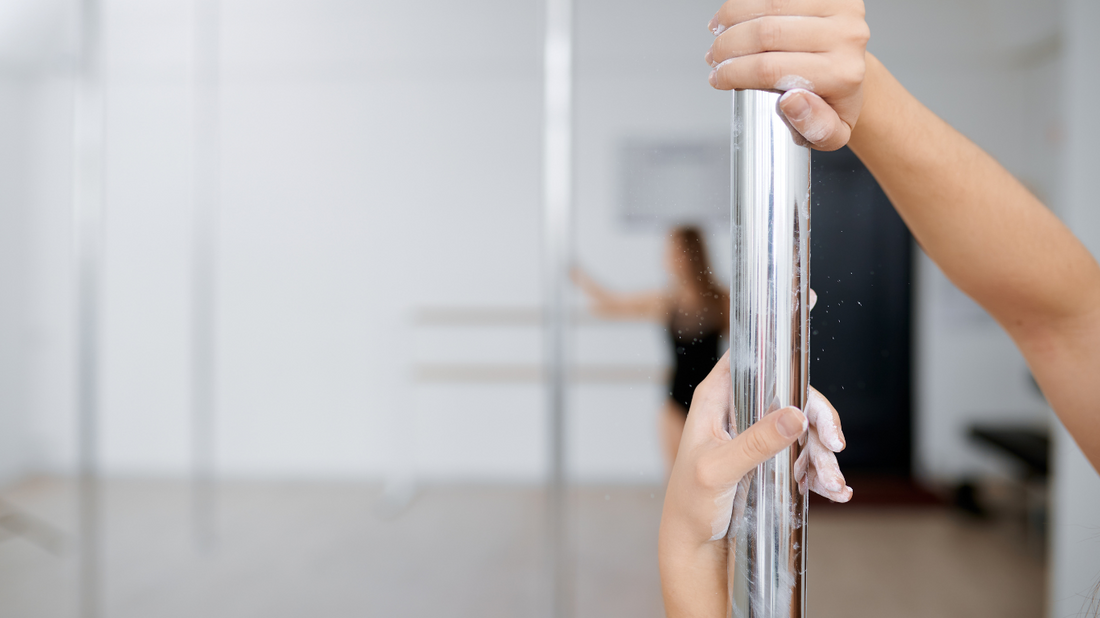New Year resolutions are a fantastic way to refocus your energy and set intentions for the year ahead. In pole dancing, it’s easy to get caught up in chasing specific tricks or goals, but what if this year, you made it about the journey? Science shows that progress-focused goals not only keep you motivated but also help you enjoy the process.
Here’s how to create meaningful resolutions that celebrate growth, effort, and the joy of pole dancing.
1. Progress-Oriented Goal Setting
The key to effective resolutions is being specific and actionable. Instead of setting vague goals like “I want to get better at pole,” reframe them into measurable steps:
- “I’ll practice three times a week, focusing on slow flow, combos, and strength moves.”
- “I’ll work on building endurance to complete a 2-minute routine by March.”
- “I’ll master Ayesha by dedicating one session per week to it.”
These goals focus on consistency and effort rather than an all-or-nothing result.
Why It Works: Science shows that specific, progress-driven goals are far more motivating than general ones and give you a clear sense of direction.
Reference: Rewiring your brain for success: the neuroscience of goal setting
2. Build Habits with Cues and Routines
Habits are the foundation of progress. Neuroscience shows that cues (visual or environmental triggers) can help you stick to your practice routine by creating consistency.
How to Build a Pole Practice Habit:
- Cue: Set up your pole space to inspire action. Keep your heels within sight, hang your polewear where you’ll see it, and create a playlist that gets you in the mood.
- Routine: Pick specific days and themes to focus on.
- Trick Wednesday: Work on static combos or challenging moves.
- Ayesha Thursday: Dedicate time to strength-building or holds.
- Heels Friday: Practice slow flow or choreography in your favorite shoes.
By sticking to a consistent schedule, you train your brain to associate those cues with practice time, making it easier to follow through.
Reference: Mastering Habit Formation: The Trigger-Behavior-Reward Cycle
3. Track Your Progress and Celebrate Small Wins
A visual progress tracker can be a powerful motivator. Whether it’s a simple calendar, a notebook, or an app, recording your efforts helps you see how far you’ve come.
How to Track and Celebrate Progress:
- Log each practice session and note what you worked on.
- Record milestones like holding a trick longer or improving transitions.
- Put your progress tracker somewhere visible—a calendar on the fridge or a journal near your pole space. Let it remind you of how much effort you’ve put in and feel proud of yourself every time you see it.
- Celebrate small wins by rewarding yourself! Got a pole practice streak going for two weeks? Treat yourself to a cute new polewear set for your amazing dedication. You deserve it!
Why It Works: Celebrating small wins and recognizing effort activates dopamine, keeping you motivated and eager to continue.
Reference: The Role of Dopamine in Habit Formation and Compulsive Behavior
4. Lean Into Accountability and Social Connection
We’re more likely to follow through on our goals when we share them with others. The pole community is supportive and encouraging—use that to your advantage!
Ways to Build Accountability:
- Share your resolution with a pole buddy or your studio group. We’re always happy to see your progress and share it with the pole community! Tag @zeronepolewear and let the whole world see you win!
- Post updates on social media to celebrate your progress and connect with others.
- Join a challenge or workshop to stay motivated and committed.
Why It Works: The brain’s social reward system responds to recognition and encouragement, making you more likely to stick to your goals.
Reference: The Science & Psychology Of Goal-Setting 101
5. Be Kind to Yourself
Progress isn’t linear, and every journey has ups and downs. There will be days when practice feels tough or you miss a session, and that’s okay.
How to Stay Positive:
- Focus on the process, not just the result. Showing up is progress in itself.
- Reframe setbacks as learning opportunities: “What can I tweak next time?”
- Remind yourself: “Every spin, stumble, and success adds to my growth.”
Why It Works: A growth mindset builds resilience, helping you stay committed even when things feel challenging.
Reference: Goals and Habits – The Neuroscience of Behaviour Change
This year, make your pole resolutions about progress, consistency, and joy. By focusing on building habits, tracking your growth, and leaning into the pole community, you’ll create a sustainable practice that celebrates the journey, not just the destination.
Here’s to a 2025 filled with spins, strength, and confidence. What’s your pole New Year resolution? Let’s embrace the process together!




